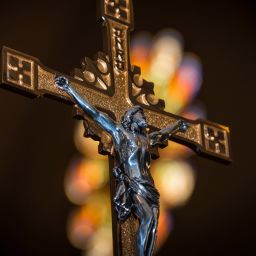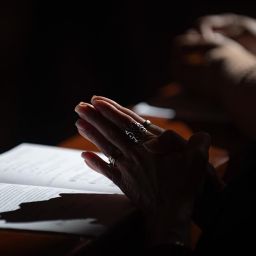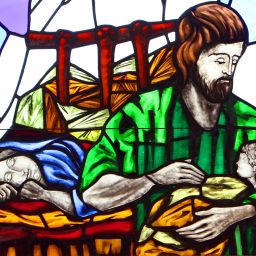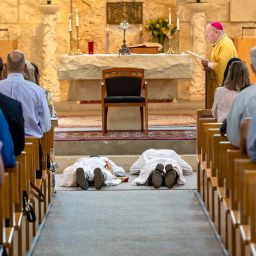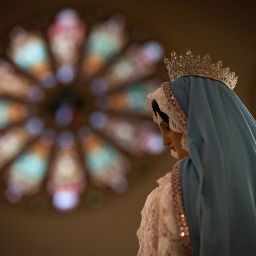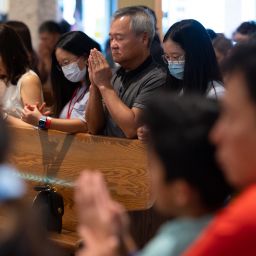
By Father Thomas Esposito, O. Cist.
Special to The Texas Catholic
The current Eucharistic Revival in the United States is generating a discussion of the role of Eucharistic Adoration in the life of the Church. While the practice is encouraged by many, some people have noted that devotions such as exposition of the Blessed Sacrament and Eucharistic processions were invented and popularized in the medieval period, and thus were not part of the early Church’s liturgical worship. This assertion is coupled with concerns that these forms of Eucharistic piety detract from the communal nature of the Church’s Eucharistic celebration, which could lead to an excessively privatized relationship between the individual believer and Jesus Christ. Some also worry that an excessively personal devotion to the Eucharist could draw attention from the Gospel mandate to serve the poor and other victims of social injustice.
These concerns are reasonable. Paul’s analogy of the Church as the Body of Christ (1 Corinthians 12) reminds us that our relationship to Christ is always rooted in the communal life with our fellow believers. As a way of clarifying the link between Adoration and the public witness of faith, a reflection on the relationship between Martha and Mary is helpful. In Luke 10:38-42, Martha is distracted with her many hosting duties, and grows annoyed that her sister Mary sits at Jesus’ feet listening to her beloved Lord. Jesus tells Martha that Mary “has chosen the better part, which will not be taken from her.” What a beautiful scene and statement to ponder in the context of Adoration!
The practice of Eucharistic Adoration reminds us that to serve and act, we must know how to adore Someone other than ourselves, and to kneel before a Will greater than our own. We cannot see Christ in the faces of our brothers and sisters if we fail to recognize Him in the Eucharist. The consecrated Host is precisely the unifying point where all faces gather literally “through Him, with Him, and in Him,” as we say at every Mass. Adoration enables us to position ourselves within the still point of the turning world, the calm eye amid life’s relentless tornado. All of time and history pivot around Christ enclosed in that tiny piece of apparent bread; so should our days, our prayers, our lives.
A beautiful insight by St. Manuel González García, found in a book called, “The Bishop of the Abandoned Tabernacle,” underlines this point:
“Jesus — who comes into the world and passes through the womb of His Mother leaving it intact, who is transfigured on Mt. Tabor, who walks on the waters, who dies when He wants and who raises Himself up from the dead, who appears to Mary Magdalene and to His disciples, and who allows Himself to be known only whenever He wishes and to whom He wishes, who goes into the house of His apostles through closed doors…that same Jesus Christ who controls space, the optics, the acoustics, the extension, the speed and properties of matter and of man’s intelligence — is He not able to be and to speak in the tabernacle without asking permission of the eyes and ears of man?”
St. Manuel understands that there is no fundamental separation between the Christ of the tabernacle and the Christ of the Gospels. The same presence Jesus bestowed on His apostles during His ministry is available to us in the Eucharistic Host, and He wishes to meet us both in the quiet reading of the Gospels and the silence of Adoration. That is why Mary chose “the better part”: she loved the Lord simply by resting in His presence.
But Christ was surely not declaring that loving service and work are wrong or unimportant; rather, He invites Martha to see that Mary’s calm attention to Him allows her to understand and love Him more deeply, enabling her to be a more joyful and fruitful disciple. Martha’s devoted service, then, must be complemented by Mary’s loving contemplation. By training the eyes to perceive Jesus in the words of the Gospel and in prayerful Adoration, love compels adorers to seek the face of Jesus outside the church building. The Mass is the union of individuals as a community that is sent, collectively and individually, into the world once the liturgy concludes. Indeed, the Mass is the fullest expression of the Church’s communion as the Body of Christ; this is surely why the Church calls and even obliges us to participate faithfully and fully in the Mass.
But the motivation for social action and the desire to right social wrongs are essential fruits of Adoration as well. Martha and Mary are present in each of us, and the proper harmony between prayer and work, private devotion and public witness, is necessary to strike in every vocation. The adoration of Jesus Christ in corpore, “in the Body” of the Eucharistic bread, generates the desire to love Him through the corporal works of mercy, which are the outward expressions to those in need of the love received in the quiet of our adoring hearts.
Father Thomas Esposito, O.Cist., is a monk at the Cistercian Abbey of Our Lady of Dallas and teaches in the theology department at the University of Dallas.



